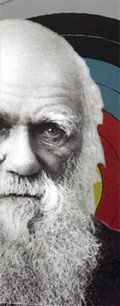Reading the Five Ways
10. The fifth Way
I don’t have a great deal to say about the fifth Way. It is not quite the standard ‘design argument’, but it is not very far off. It focuses not on the supposedly inexplicable way in which animals are put together, but on the fact that the world is full of things that act so as to achieve some end, and do so successfully. Things, as it were, act not only as if impelled from behind, but as if drawn from in front – and yet most things have no capacity to see, understand, or otherwise take into account what is in front, and so that drawing must be something that is given to them by something that can ‘take into account’ – something intelligent.
 You are standing in a field and are startled when, one by one, ten arrows shoot past you. Seven of them hit a nearby target; two undershoot; only one misses wildly, parting your hair and burying itself in a nearby tree. Whilst you can explain the movement of the arrow through the air by reference to the laws of simple projectile motion, you guess that something other than, say, a random explosion has hurled these arrows into the air: there is nothing that could ‘draw’ them towards the target so consistently unless they had somehow been aimed. There must be some being with a capacity to take the target into account – a capacity to aim – somewhere in the process.
You are standing in a field and are startled when, one by one, ten arrows shoot past you. Seven of them hit a nearby target; two undershoot; only one misses wildly, parting your hair and burying itself in a nearby tree. Whilst you can explain the movement of the arrow through the air by reference to the laws of simple projectile motion, you guess that something other than, say, a random explosion has hurled these arrows into the air: there is nothing that could ‘draw’ them towards the target so consistently unless they had somehow been aimed. There must be some being with a capacity to take the target into account – a capacity to aim – somewhere in the process.
The trouble is, of course, is that in the case of natural goal-directedness there are processes of which Aquinas could not have dreamt, processes that can ‘take into account’ the target without any kind of intelligence. I may be missing the target myself, but I’m pretty sure that Darwin has done for the fifth Way.

Recent Comments